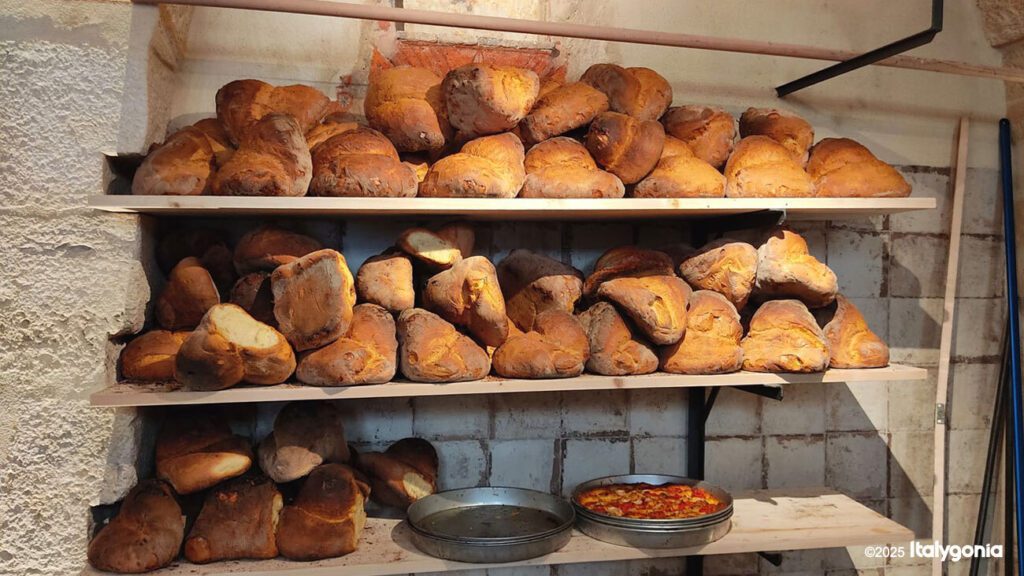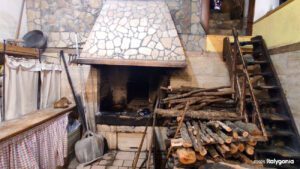The best travel experiences in Italy
Italian Altamura Bread Recipe: A Step-by-Step Guide to Making Authentic Pane di Altamura
What Makes Altamura Bread So Special?
Altamura, located in the Puglia region of Italy, is famous worldwide for producing one of the most iconic types of bread – Pane di Altamura. This bread is not just any bread; it is a symbol of Puglia’s rich agricultural heritage, deeply rooted in centuries of tradition. Pane di Altamura has been granted the Protected Designation of Origin (DOP) status, which ensures that it is made in Altamura and surrounding areas using traditional methods and ingredients that meet strict quality standards.
The secret behind the bread’s distinctive flavor lies in its primary ingredient: local durum wheat, which is milled in traditional stone mills, and in its unique preparation and baking process. The bread is made in such a way that it preserves its natural taste and texture, which is why it is sought after by bread enthusiasts around the world.
The Ingredients and Their Role
The key ingredients in the Altamura bread recipe include:
- Durum wheat flour (semola di grano duro): This is the heart of the bread and gives it its signature texture.
- Water: Clean, fresh water is essential for the dough.
- Yeast: A natural, slow-fermenting yeast is used to ensure a slow rise.
- Salt: Adds flavor and enhances the taste of the bread.
- Time: Time is arguably the most important ingredient. The slow fermentation process of Altamura bread allows the flavors to develop and gives the bread its unique chewiness.
Step-by-Step Guide to Making Altamura Bread
Preparation Time
Making Altamura bread at home requires patience, but the results are worth the effort. This recipe yields two loaves of bread, and the total preparation and baking time is about 8 hours, so be sure to plan accordingly.
Ingredients Needed
- 1 kg of durum wheat semolina (preferably from the Altamura region)
- 650 ml of water (room temperature)
- 25 g of salt
- 5 g of fresh yeast
- 1 tbsp of olive oil (optional for extra flavor)
Step 1: Prepare the Dough
- Activate the Yeast: In a small bowl, dissolve the fresh yeast in warm water. Let it rest for about 10 minutes until it becomes frothy.
- Mix the Flour and Water: In a large mixing bowl, add the durum wheat semolina and slowly pour in the water with the yeast. Use your hands or a wooden spoon to combine the flour and water. The mixture will initially be quite sticky, but that’s expected.
- Knead the Dough: Once the ingredients are combined, start kneading the dough by hand for about 10-15 minutes. The dough should become smooth and elastic. If the dough feels too sticky, sprinkle in a small amount of semolina, but be careful not to add too much.
- Rest the Dough: Form the dough into a ball and cover it with a damp cloth or plastic wrap. Let it rest for about 1 hour, or until it doubles in size.
Step 2: Shape the Loaves
- Shape the Dough: Once the dough has risen, gently punch it down to release any air bubbles. Divide the dough in half and shape each portion into a round loaf. You can shape the loaves by folding the edges of the dough underneath to create a smooth, round top.
- Rest the Shaped Loaves: Place the loaves on a lightly floured surface or a baking tray. Cover them with a damp cloth and let them rest for another 30 minutes to 1 hour. This second rise is crucial for the bread’s texture.
Step 3: Bake the Altamura Bread
- Preheat the Oven: Preheat your oven to 250°C (480°F). If you have a pizza stone or a baking steel, preheat it inside the oven for best results.
- Slash the Bread: Before baking, use a sharp knife to make a few slashes on the top of each loaf. This helps the bread expand during baking and gives it a traditional look.
- Bake the Loaves: Place the loaves in the oven, directly on the pizza stone or baking tray. If you don’t have a stone, use a baking sheet. Reduce the oven temperature to 220°C (430°F) after the first 10 minutes, and bake for an additional 30 minutes. The bread should be golden brown on top with a crispy crust.
- Cool the Bread: After baking, remove the loaves from the oven and let them cool on a wire rack. Allow the bread to cool completely before slicing, as this helps to enhance the flavor and texture.
The Perfect Pairings for Altamura Bread
Altamura Bread with Local Cheeses
One of the best ways to enjoy Pane di Altamura is with some traditional local Puglian cheeses. Caciocavallo, burrata, and pecorino are excellent choices to pair with the hearty flavor of the bread. Spread some olive oil on the bread and enjoy the combination of textures and flavors.
Altamura Bread with Olive Oil
Another fantastic way to enjoy Altamura bread is simply dipping it in extra virgin olive oil. The Puglia region is known for its high-quality olive oils, and combining fresh, crusty bread with some local olive oil is a quintessential Italian experience.
Altamura Bread for Sandwiches
Thanks to its sturdy texture, Pane di Altamura is perfect for making sandwiches. Use it as a base for both simple or gourmet sandwiches – from classic prosciutto and cheese to more elaborate combinations with fresh vegetables, salami, or even seafood.
Where to Buy Altamura Bread in Italy
Altamura Bakeries
If you’re visiting Altamura, you can buy Pane di Altamura directly from local bakeries such as Panificio F.lli Scordato, Panificio Gallo, and Panificio Di Stefano. These bakeries use traditional methods to bake the bread daily, ensuring that you’re getting the freshest loaf possible.
Buy Altamura Bread in Bari and Matera
If you’re not able to visit Altamura directly, you can still find authentic Pane di Altamura in Bari and Matera. Many local bakeries in these cities offer freshly baked loaves, allowing you to taste the best of Altamura even if you’re not in the town itself.
Plan Your Visit to Altamura
Book a Private Guide and Tour
To learn more about Pane di Altamura and its rich history, consider booking a private tour of the town with a knowledgeable private guide. A guide can take you through the bakeries and explain the centuries-old tradition of bread making, giving you an in-depth understanding of the process.
Private Transfers to Altamura
If you’re traveling to Altamura from nearby cities like Bari or Matera, consider booking a private transfer for a smooth and comfortable journey. A private taxi or van NCC will ensure that you can travel in style and arrive stress-free, ready to experience everything Altamura has to offer.
Book your Altamura private tour:
You might also be interested in:
Is Altamura Worth Visiting? A Complete Guide to Exploring this Charming Puglian Town
How to Get from Bari to Matera (With Public Transport)
“Federicus” Medieval Festival: A Journey Through History in the Heart of Italy
Altamura: An Ancient Beauty of Puglia
Altamura Things to Do: Discover the Best Experiences in the City of Bread
Altamura Man Death: Unraveling the Mystery of a Prehistoric Tragedy
https://ferrovieappulolucane.it/en/
https://italian-traditions.com/federicus-medieval-fair-altamura-apulia/



